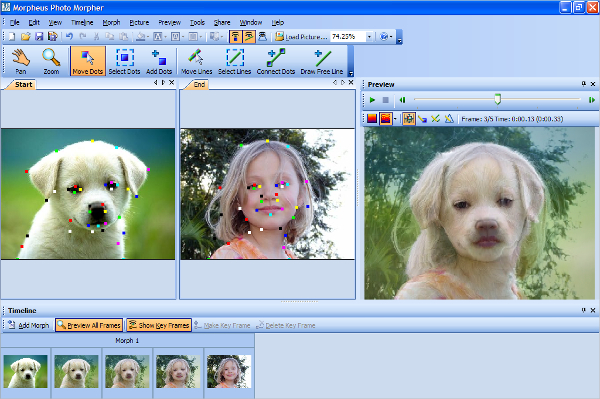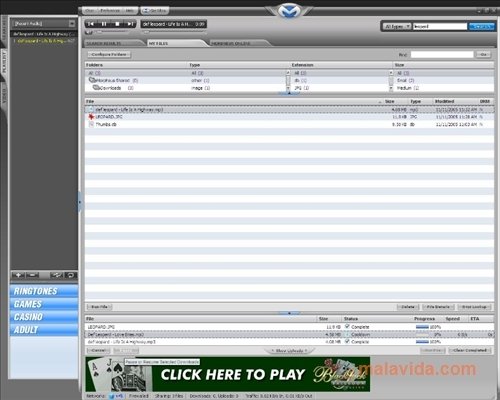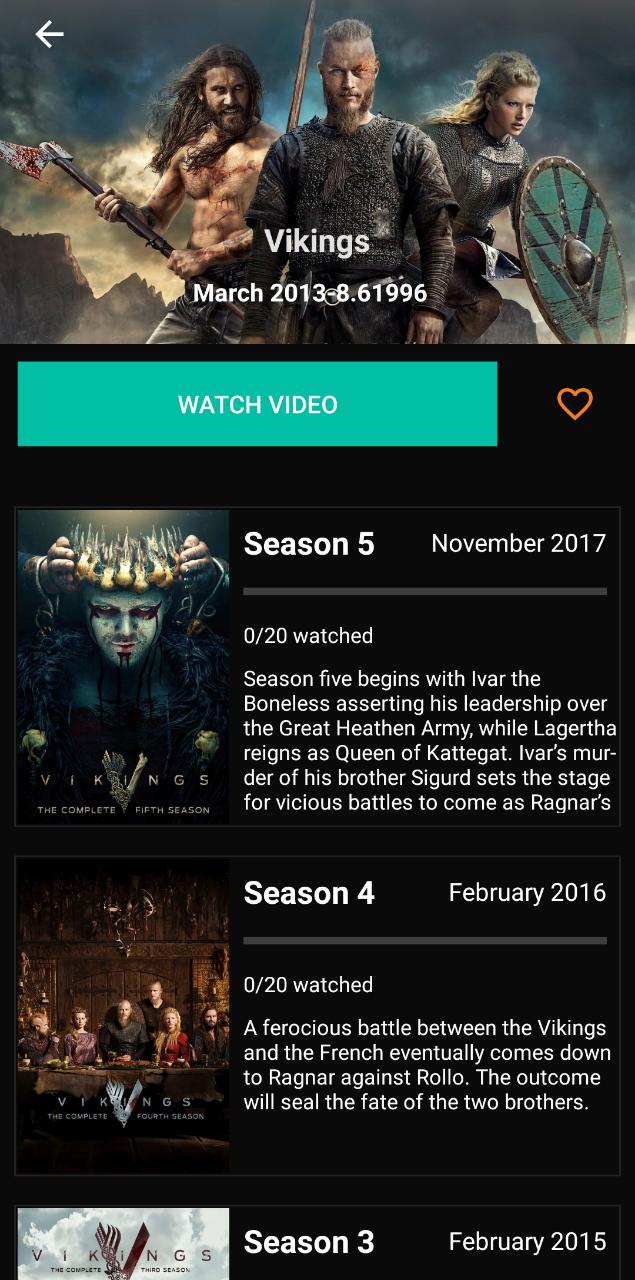Overview¶
Morpheus is a solid P2P application, but doesn't make the jump to multimedia super-app. New transfer system – faster downloads and ability to set priority.Firewall improvements - enhanced Universal Plug and Play (UPnP) support.Skins update - changes reload without restart of application.Alerts indicating files that may not be authorized for. The application is a clone of Morpheus with additional features. Download the latest Morph TV V1.70 APK file on your Windows/MAC Computer from here. First method is downloading latest Morpheus TV Apk file from our download page and installing the APK file. Second method is updating through the App. Follow below steps to Update from the installed app. First open the Morpheus TV app, if there is any new update you will see it in the top like UPDATE 1.XX.
MacStadium is a provider of enterprise-class hosting solutions for Apple Mac infrastructure. It can be used to deploy a hosted private cloud for large-scale CI/CD or even a single Mac mini to test an iOS app. It allows virtualized Mac build machines
Features¶
Virtual Machine Provisioning
Backups / Snapshots
Resource Groups
Datastores and DRS Clusters
Distributed Switches
Datacenter / Cluster scoping
Brownfield VM management and migration
VMware to VMware migrations
VMDK/OVF image conversion support
Hypervisor Remote Console
Periodic Synchronization
Veeam Backup Integration
Lifecycle Management and Resize
On top of all these features, Morpheus also adds additional features to VMware that do not exist out of the box to make it easier to manage in multitenant environments as well as hybrid cloud environments:
Cloud-Init Support
VHD to VMDK Image Conversion
QCOW2 to VMDK Image Conversion
Multitenancy resource allocation
Virtual Image management (Blueprints)
Auto-scaling and recovery
Getting Started¶
To get started with VMware, simply start by adding a Cloud in the Infrastructure->Clouds section.
To start adding a VMware cloud there will be some things you will need:
Typically this is the url to the vCenter web client with a /sdk in the path
A set of credentials with high level access to VMware (ensure the account has Datacenter level access)
Once these fields are entered, some selections will start pre-populating. A cloud integration is scoped to a specific data center, and can optionally be scoped down to a single cluster or even a single resource pool. If the drop downs do not populate, please verify the api url is resolvable, morpheus has access to vCenter on 443, and the provided credentials are correct and the user has sufficient permissions.
Another cool feature provided with the cloud integration is optional Resource Pool scoping. One can choose to allow the cloud to provision into All Resource Pools or a singular Resource Pool. When choosing All, these Resource Pools can be managed from a sub-account and visibility perspective via the Cloud Detail page (multi-tenancy).
The VMware cloud integration provides a few additional options including allowing users to make host selections or keeping that aspect hidden such that the best host is automatically chosen for the requested provision.
The RPC Mode feature can be configured to allow Morpheus to install its agent on the Guest operating system via either SSH/WinRM or Vmware Tools Guest Process feature. The VMware tools Guest Execution API can be tricky so it is recommended to use SSH/WinRM if possible. However, if it is not possible for the Appliance to have outbound access to all networks in which VMs are being provisioned to the SSH/WinRM ports (22, 5985 respectively) then Guest Execution is the only option.
The Use VNC console option on the VMware cloud requires special configuration on each ESXI host but allowed hypervisor level remote console support. (See the Advanced Section for details)

When following this add cloud wizard an option will be presented to create a group or add to an existing group. These groups can be given provisioning permission via role based access control. It is normally recommended that groups are organized such that one cloud exists in one group unless the networks are setup such that internal routing is possible between the clouds. This is very useful for bursting, or hybrid cloud configurations.
Windows Provisioning Tips¶
Morpheus Free Music Downloads
By default when provisioning windows templates, Morpheus performs guest customizations which initiates a sysprep. This resets the Administrator user and password. Morpheus will set the Administrator password from Administration>Provisioning>WindowsSettings>Password.
Users can also set the username on an image as Administrator and enter a different password if unique passwords are required per image.
Download Morpheus Tv For Free
Guest customizations are required when assigning static IP’s manually or using IP pools. They can be disabled per virtual image advanced settings under Provisioning>VirtualImages>EditImage>Advanced>Uncheck'ForceGuestCustomization' if using DHCP. However the SID will not be changed from the source template. In addition, new VM’s will not be able to join a domain that had already been joined by the source template or any other VM’s with that SID.
Existing Instances¶
Morpheus provides several features regarding pulling in existing virtual machines and servers in an environment. Most cloud options contain a checkbox titled ‘Inventory Existing Instances’. When this option is selected, all VMs found within the specified scope of the cloud integration will be scanned periodically and Virtual Machines will be synced into Morpheus . By default these virtual machines are considered ‘unmanaged’ and do not appear in the Provisioning->Instances area but rather Infrastructure->Hosts->VirtualMachines. However, a few features are provided with regards to unmanaged instances. They can be assigned to various accounts if using a multitenant master account, however it may be best suited to instead assign the ‘Resource Pool’ to an account and optionally move all servers with regards to that pool (more on this later).A server can also be made into a managed server. During this process remote access is requested and an agent install is performed on the guest operating system. This allows for guest operations regarding log acquisition and stats. If the agent install fails, a server will still be marked as managed and an Instance will be created in Provisioning, however certain features will not function. This includes stats collection and logs.
Note
All Cloud data is resynchronized on a 5 minute interval. This includes Datastores, Resource Pools, Networks, Blueprints, and Virtual Machines.
Service Plans¶
A default set of Service Plans are created in Morpheus for the VMware provisioning engine. These Service Plans can be considered akin to AWS Flavors or Openstack Flavors. They provide a means to set predefined tiers on memory, storage, cores, and cpu. Price tables can also be applied to these so estimated cost per virtual machine can be tracked as well as pricing for customers. By default, these options are fixed sizes but can be configured for dynamic sizing. A service plan can be configured to allow a custom user entry for memory, storage, or cpu. To configure this, simply edit an existing Service Plan tied to VMware or create a new one. These all can be easily managed from the Admin->Plans&Pricing section.
Virtual Images / Blueprints¶
Morpheus will automatically take an inventory of all blueprints configured in vCenter and present them as options during provisioning. However, in order for Morpheus to properly provision these virtual machines and provide accurate stats and health of these virtual machines, an agent must be installed during virtual machine startup. This means remote access needs to be granted at the guest operating system level to Morpheus . To properly configure these virtual images, find the relevant images in Provisioning->VirtualImages and edit the entry. On this form, a few options are presented. The first is a check box asking whether or not cloud-init is enabled. If cloud-init is enabled, simply provide the default OS username configured (for Ubuntu the username is ubuntu and for CentOS the username is centos). For those looking to add cloud-init to existing blueprints Morpheus requires no special configuration and can use the default cloud.cfg settings.
A global cloud-init username/password can also be configured per account as well as a keypair via the Admin->Provisioning settings section. The great benefit of utilizing cloud-init is default blueprints do not need common credential sets thereby increasing provisioning security.
Windows systems do not typically support cloud-init. So simply turn this checkbox off and provide the Administrator credentials. It should be noted that these credentials are encrypted in the database. If using WinRM for the RPC Mode instead of VMware tools, a Local or Domain Administrator account credential set can be provided instead.
Snapshots¶
Morpheus allows the ability to create a snapshot of a VM in VMware vCenter. From the instance detail page, simply select Actions->CreateSnapshot to begin creation of a new Snapshot. Existing snapshots can be viewed in the BACKUPS tab on the instance detail page. Snapshots taken in vCenter will sync into Morpheus every five minutes. To revert to a previous snapshot, click on the revert icon located on the right side of the Snapshot. Snapshots can be deleted by clicking on the trash can icon.

Note
Access to Snapshots can be limited or removed entirely for specific user roles as needed. To edit a role’s Snapshots permissions, go to Administration>Roles>(Yourselectedrole)>Snapshots. Users can be given Full, Read-only, or No access.
Tagging and Metadata¶
As of Morpheus version 4.1.0, tagging support is included for vCenter in addition to the other clouds that have already supported it in past versions. Tags will sync to vCenter from Morpheus and existing tags are also inventoried from vCenter into Morpheus.
Note
This feature requires a minimum API version of vCenter 6.5. The API version can be edited by navigating to ‘Infrastructure > Clouds’ and clicking the edit (pencil) button in the row for the relevant cloud. The field is labeled ‘VERSION’.
Tags can be created on-demand when provisioning from the ‘CONFIGURE’ tab of the ‘CREATE INSTANCE’ wizard (Provisioning > Instances). Within the ‘Metadata’ drawer, you will see sets of fields to enter key/value pairs. On creation of the instance, this metadata will be synced into vCenter.
‘Option Types’ from your library can also be exported as metadata for use with vCenter. When adding or editing a new Option Type (Provisioning > Library > OPTION TYPES), simply mark the box labeled ‘EXPORT AS METADATA’. The ‘FIELD NAME’ becomes the tag category in VMWare.
Morpheus Free Download
Docker¶
So far this document has covered how to add the VMware cloud integration and has enabled users the ability to provision virtual machine based instances via the Add Instance catalog in Provisioning. Another great feature provided by Morpheus out of the box is the ability to use Docker containers and even support multiple containers per Docker host. To do this a Docker Host must first be provisioned into VMware (multiple are needed when dealing with horizontal scaling scenarios).
To provision a Docker Host simply navigate to the Clusters tab of the Cloud detail page or Infrastructure > Clusters section. From there, click + ADD CLUSTER to add a VMware Docker Host. This host will show up in the Hosts tab next to other ESXi servers that were inventoried by the VMware cloud integration. Morpheus views a Docker host just like any other Hypervisor with the caveat being that it is used for running containerized images instead of virtualized ones. Once a Docker Host is successfully provisioned a green checkmark will appear to the right of the host marking it as available for use. In the event of a failure click into the relevant host that failed and an error explaining the failure will be displayed in red at the top.
Some common error scenarios include network connectivity. For a Docker Host to function properly, it must be able to resolve the Morpheus appliance url which can be configured in Administration > Settings. If it is unable to resolve and negotiate with the appliance than the agent installation will fail and provisioning instructions will not be able to be issued to the host.
Multitenancy¶

A very common scenario for Managed Service Providers is the need to provide access to VMware resources on a customer by customer basis. With VMware several administrative features have been added to ensure customer resources are properly scoped and isolated. For VMware it is possible to assign specific Networks, Datastores, and Resource Pools to customer accounts or even set the public visibility of certain resources, therefore allowing all sub accounts access to the resource.
Advanced¶
There are several advanced features provided within Morpheus that can leverage some cool aspects of VMware. One of these features is Remote Console support directly to the hypervisor. To enable this feature a few prerequisites must be met. First, the Morpheus appliance must have network access to the ESXi hosts within VCenter. Secondly, firewall settings need to be adjusted on each ESXi host. This can be done in VSphere under firewall configuration on the host. Simply check the gdbserver option, which will open up the necessary ports (starting at 5900 range).
Important
Hypervisor Console for vCenter 6.5 requires Morpheus v3.2.0+
Now that the ESXi hosts are ready to utilize remote console, simply edit the cloud in Morpheus via Infrastructure->Clouds. Check the option that says Use VNC. It is important to note that currently this functionality only works for newly provisioned vm’s provisioned directly via Morpheus . This should change soon however.
It is also possible to import vm snapshots for backup or conversion purposes from VCenter and also an ESXi host. However, this does require that the ESXi host license has an enterprise level license as it will not allow the appliance to download a virtual image if it is not a paid VMware license.